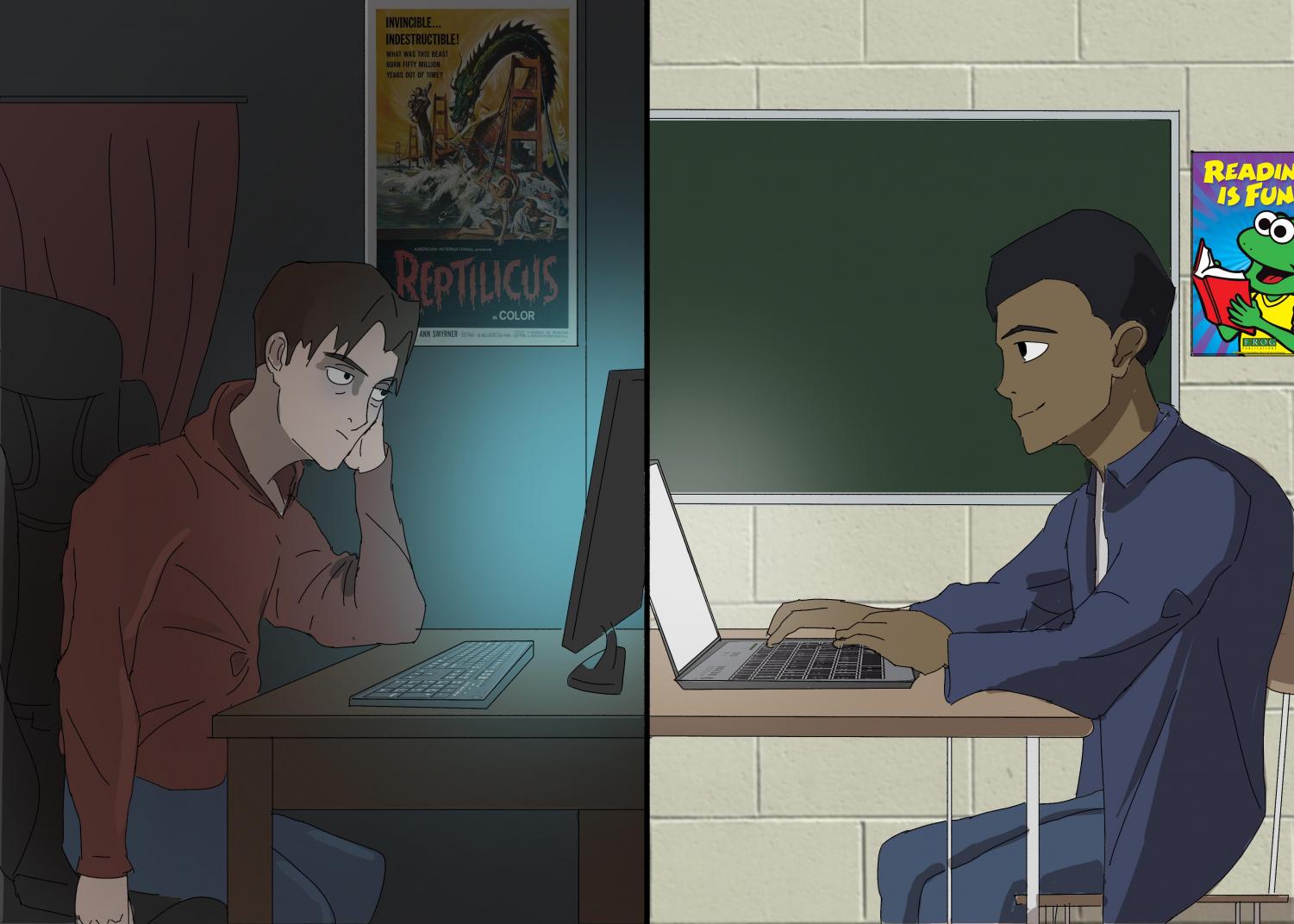Editorial: Dear teachers
Our take: Patience goes both ways, both students and teachers need to be more empathetic through difficult times
December 10, 2020
Dear Teachers,
Switching to fully virtual learning for almost three weeks allowed former in-person students to get a feel for what they were missing out on at school. While veteran eLearners have become accustomed to switching on cameras, being ready at their mics and participating actively, many who made the recent switch found themselves grappling with technology and routine adjustments.
One of the most difficult things to do for six hours a day is sit on camera. The constant hyper-awareness of your facial expressions, movements and actions leads to heavy anxiety. At school, while one may be concerned with their appearance, they aren’t obligated to stare back at reflections of themselves for hours every day. There’s also something haunting about seeing your face in the mirrored Microsoft Teams call, morphed and reflected opposite to what we’re used to seeing through mirrors and our phones’ front facing cameras. It’s hard to focus knowing that at all times, your class is staring at you rather than collectively watching the teacher or the board. There is a real fear of being photographed while on a group call, and being susceptible to getting posted on someone’s Snapchat story or finsta Instagram account. This is why it is valuable when teachers allot time in class to turn off cameras to work.
Eye strain has also taken a toll this year more than ever before. Following six hours of school and another handful for homework, the mild stinging discomfort can often lead to nausea and headaches, a phenomenon known as “cybersickness.” At school, it’s much easier to focus on our changing surroundings, as opposed to sitting in the same room for six hours at home, eyes glued to a screen. A beneficial solution to this problem has been when teachers provide us with intentional breaks to get away from technology.
If there’s anything we need teachers to remember, it would be to not jump to conclusions, especially in regards to eLearners. What may seem like lazy students unwilling to unmute a mic or turn a camera on, might actually be someone struggling to focus on work due to mental health issues, living in a disruptive household or having genuine technical difficulties. It’s easy to get upset at unresponsive students, and easier to see problems at their face value.
The School Town of Munster’s decision to return back to hybrid learning after our brief period of being fully virtual was not made without criticism. In regards to the safety and well-being of teachers and students, this decision to return students to school in the midst of a pandemic was irresponsible. Indiana’s cases are higher than ever before, and the winter season will be relentless. We are missing the opportunity to reduce the spread by allowing hundreds of students to meet, guaranteeing a rise in cases.
At the end of the day, we can all recognize that hybrid learning is not the ideal method of education. It is a logistical nightmare, and forcing teachers to maintain two equal classrooms at once is nearly impossible. Thus, the decision to return some students back to school is understandable; vulnerable students have fallen behind and are in need of an adequate learning environment. Deciding between minimizing the spread of the virus or having students be caught up in their education is difficult.
If we’ve learned anything this year, it’s that patience is key. The best thing we can do to help each other is to strengthen our communication skills. Teachers, know that we want what’s best for everyone, and that we are trying.
On behalf of the student body,
Crier
